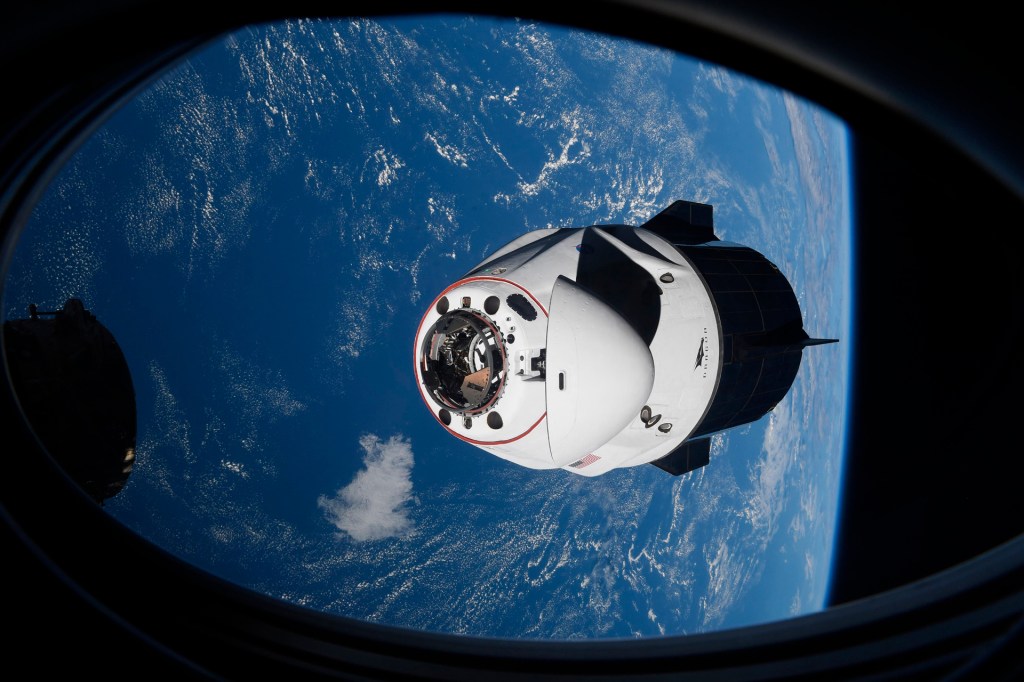An Electric Future

General Motors (GM) is one of the world’s major automakers. In January, the company set a goal: It would stop selling gas-powered cars by 2035. It will make more battery-powered vehicles.
This is a big moment for the auto industry. Scientists say it’s crucial to move away from gas-powered vehicles. Doing so will fight climate change. Transportation causes about 25% of global carbon emissions
carbon emission
 MASKOT—GETTY IMAGES
the release of carbon dioxide gas through human activities such as burning oil, coal, or gasoline
(noun)
I bike as often as I can to reduce carbon emissions.
. Three-quarters of that is from road travel.
MASKOT—GETTY IMAGES
the release of carbon dioxide gas through human activities such as burning oil, coal, or gasoline
(noun)
I bike as often as I can to reduce carbon emissions.
. Three-quarters of that is from road travel.
Countries are taking action. In China, most new vehicles sold must be electric by 2035. The United Kingdom, Ireland, and the Netherlands will ban sales of new gas-powered cars in 2030.
Venkat Viswanathan is a professor of mechanical engineering at Carnegie Mellon University. That’s in Pittsburgh, Pennsylvania. He told TIME for Kids, “It is now abundantly clear that electric is the future.”
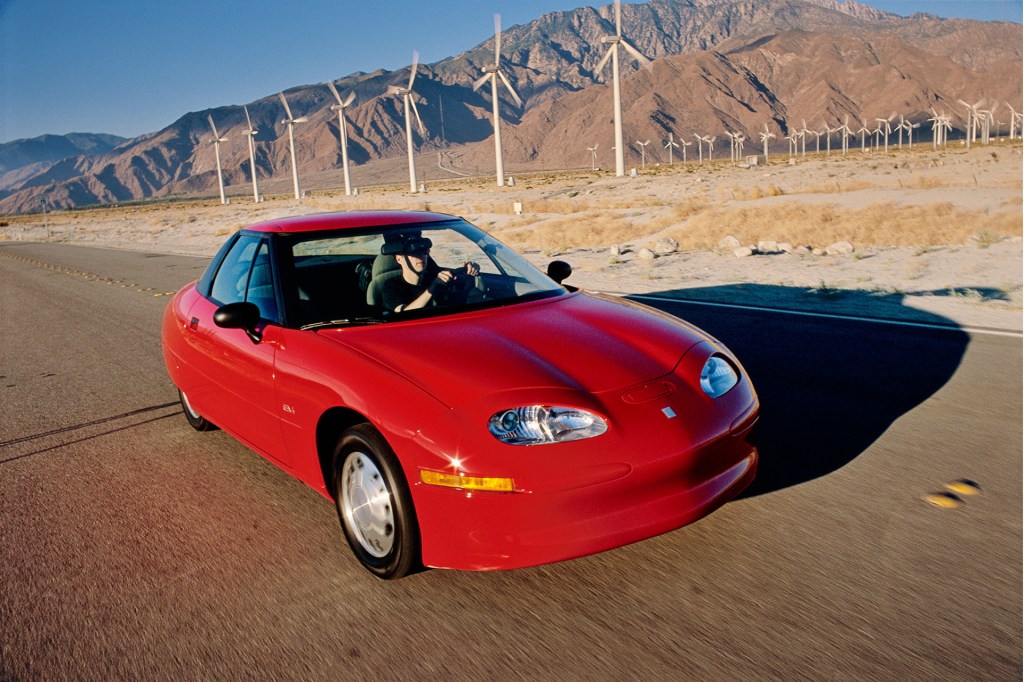
EARLY MODEL Introduced in the 1990s, GM’s EV1 is the first modern electric car made to be sold in large numbers.
DAVID BUTOW—CORBIS/GETTY IMAGESA Cleaner Option
Electric cars run on lithium-ion batteries. That’s what powers our mobile devices.
Making these batteries has an environmental cost. Lithium is taken from the earth, like the oil used to make gasoline. But the long-term cost is much smaller. “When you use up a battery, you can recycle the material,” Jessika Trancik says. She’s a researcher at the Massachusetts Institute of Technology. That’s in Cambridge, Massachusetts.
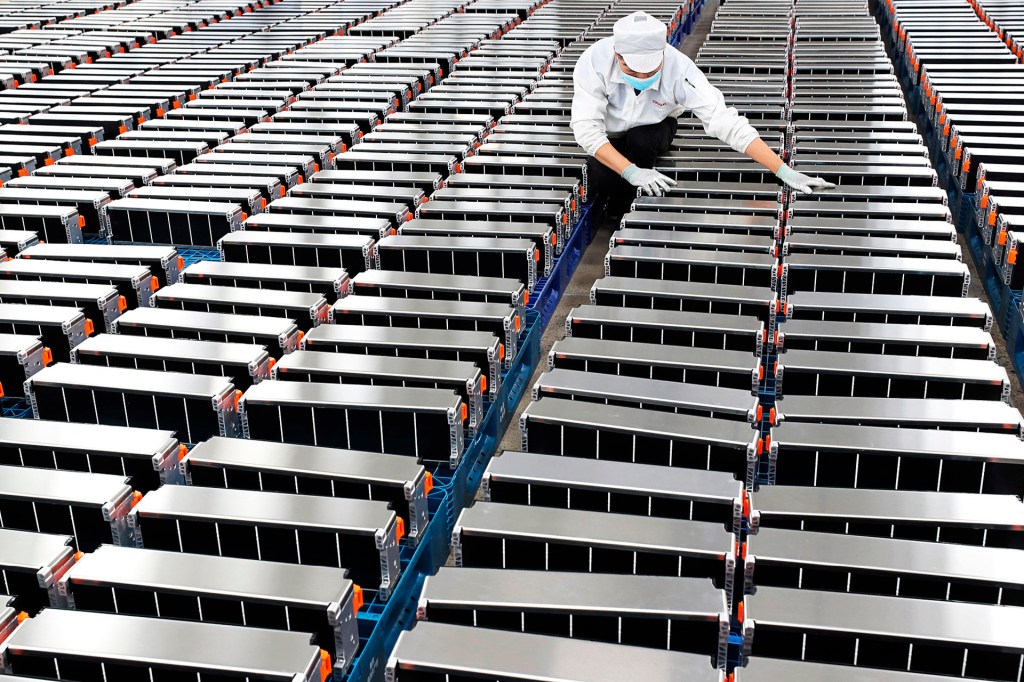
BATTERY PACK A worker handles batteries at a factory in Nanjing, China, on March 12, 2021.
STR/AFP/GETTY IMAGESElectric cars have another environmental effect. They need energy to recharge. They get the energy from power plants. These places burn fossil fuels
fossil fuel
 TETRA IMAGES/GETTY IMAGES
a fuel formed in the earth from plant or animal remains
(noun)
Most cars run on gasoline, which is made from fossil fuels.
. But countries can switch to cleaner energy sources, such as wind and solar power. If they do, electric vehicles will get cleaner too. Even now, they’re cleaner than cars that run on gas.
TETRA IMAGES/GETTY IMAGES
a fuel formed in the earth from plant or animal remains
(noun)
Most cars run on gasoline, which is made from fossil fuels.
. But countries can switch to cleaner energy sources, such as wind and solar power. If they do, electric vehicles will get cleaner too. Even now, they’re cleaner than cars that run on gas.
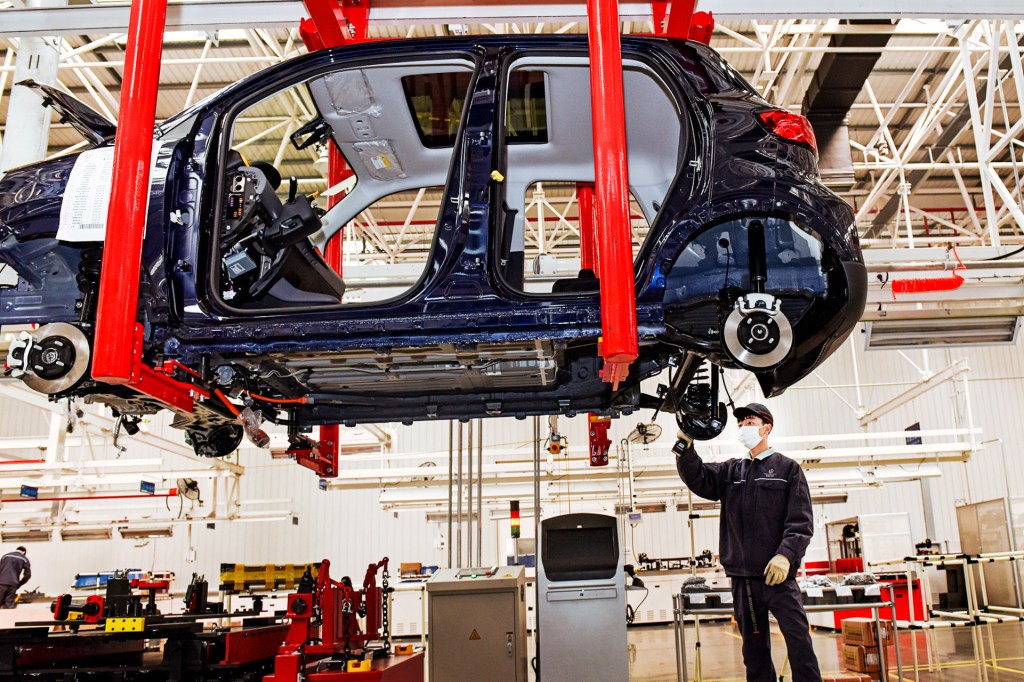
WORK IN PROGRESS An assembly line worker inspects an electric car at a factory in Jinhua, China, on February 18, 2021.
LI JIANLIN—VCG/GETTY IMAGESDriving Ahead
Government policies can make electric cars accessible to everyone. China has invested in electric-car production for years. A basic electric car sells there for as little as $5,000.
Charging stations must be made widely available. President Joe Biden plans to build half a million new charging stations in the U.S. by 2030. Trancik hopes this will be done fairly. “It’s important to put chargers where many different people can have access to them,” she says. “Not just wealthier people.”
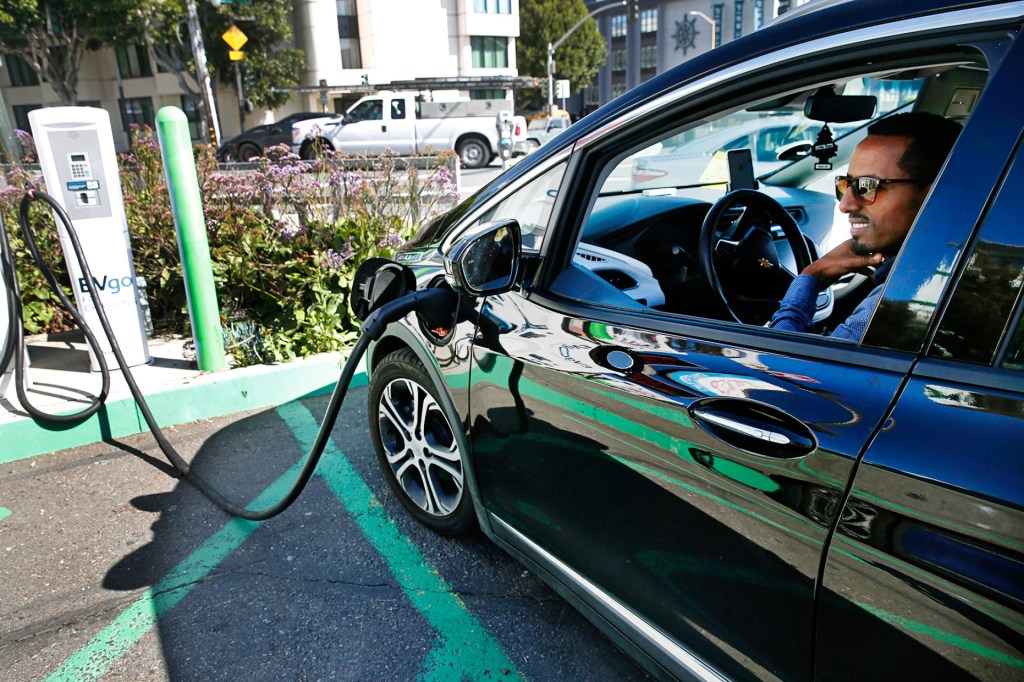
POWERING UP A driver charges his Chevy Bolt in San Francisco, California, in March 2019.
PAUL CHINN—SAN FRANCISCO CHRONICLE/GETTY IMAGESLast year, only 5% of the approximately 67 million new cars sold worldwide were electric (see “On the Rise”). Sales will probably increase. For Viswanathan, electric cars are just the beginning. He sees a future of solar-powered homes and electric flying cars. “Your entire life will run on batteries,” he says. “It will be a totally new world.”
On the Rise
Worldwide, the sales of electric vehicles are going up. This chart shows that by 2030, about half of new cars sold could be electric.
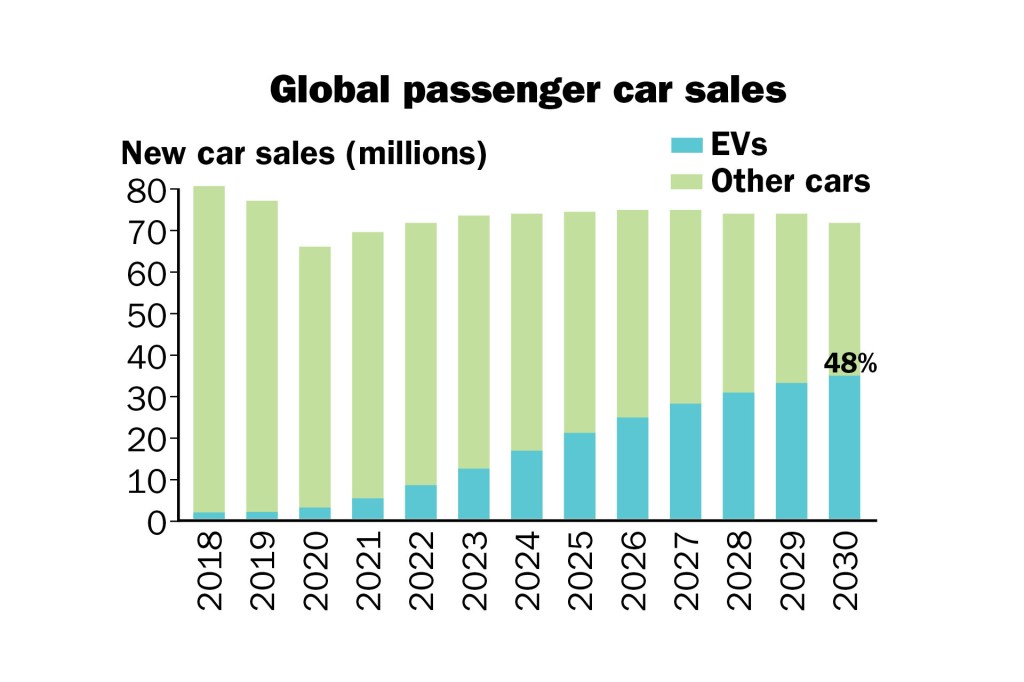
The popularity of electric cars will rise as prices come down. That’s happening faster than expected. Technology is improving. One reason for this is that governments are investing in battery development. Soon, a plug-in vehicle may be as cheap as a gas-powered car.



